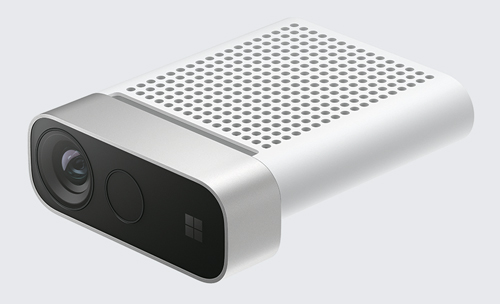News
Microsoft Kills Off Azure Kinect Products
- By Kurt Mackie
- August 17, 2023
Microsoft will stop offering its Azure Kinect Developer Kit, but partners can still license the depth-sensing camera technology, Microsoft announced on Thursday.
The Azure Kinect Developer Kit will be sold "until the end of October or until supplies last." Its software development kit, though, "will continue to be available for download." Software developers who used Azure Kinect should seek out Microsoft's partners, who have created their own products using Microsoft's "indirect time-of-flight (iToF)" technology that's part of Microsoft's camera-sensor products.
For instance, Microsoft mentioned that the following partners have used its iToF technology in their products:
- Orbbec, with its Femto Bolt camera uses the "same depth camera module as Azure Kinect Developer Kit," allowing developers to "migrate their existing applications" using an "API bridge."
- The semiconductor company Analog Devices has licensed Microsoft's "pixel and sensor technology" to build its own "depth sensors and camera models."
- SICK A.G., an industrial sensor maker, has used Microsoft's technology to build its Visionary-T Mini sensor camera, as well as safeVisionary2, a "safe 3D" camera-sensor for environments.
Microsoft's Rationale
Microsoft's reason for ending its own Azure Kinect product seems to be that it isn't entering the camera-sensor market, and it doesn't want to put any further efforts into developing the product:
This technology [Azure Kinect] has been through a series of evolutions over the past 10 years. It is important to us that this technology remains available to the ecosystem. When it came time to bring users newer iterations of depth cameras built on top of Microsoft developed iToF depth sensing, it was clear partnering with leaders in the ecosystem and empowering them to deliver end-to-end solutions was the best option.
Microsoft has halted other efforts besides Azure Kinect in the mixed reality space, though.
For instance, early this year, Microsoft cut its entire team that had been working on a Mixed Reality Toolkit, which was done as part of a 10,000-personnel employee-cutting phase expected to extend into calendar-year March 2024. Microsoft also back then announced the shutdown its AltspaceVR effort, a platform for creating "live mixed reality experiences," which was planned to end on March 10, 2023. AltspaceVR was part of the Microsoft Mesh platform, which is designed to create spaces for large virtual meetings, accessed using the HoloLens 2 mixed reality headset.
Kinect's Many Deaths
The impending death of Azure Kinect is a thrice-told tale.
The Kinect camera once was an accessory for Microsoft's Xbox 360 gaming console, and it was later added directly to the product, but it was just deemed an extra cost. Microsoft announced that it would stop manufacturing Kinect camera products back in late 2017.
Kinect technology, though, lived on in Microsoft's HoloLens 2 mixed reality headset (see below).
 The Microsoft Azure Kinect camera-sensor device for HoloLens 2 (source: Microsoft).
The Microsoft Azure Kinect camera-sensor device for HoloLens 2 (source: Microsoft).
In mid-2018, Microsoft announced plans for a fourth-generation version of the Kinect product for Azure, which it called "Project Kinect for Azure." This product veered from the concept of using the camera for games and was designed to tap artificial intelligence, edge computing and Internet of Things technologies.
Project Kinect for Azure was the early name for the current Azure Kinect camera-sensor in the Azure Kinect Developer Kit, which Microsoft is now ending.
Microsoft's HoloLens 2 is still a product, and Microsoft recently showcased its many apps used with it, mostly for industrial purposes, in this announcement. Microsoft sells solutions such as Microsoft 365 Dynamics Guides for remote collaborations with field technicians, as well as Dynamics 365 Remote Assist for video and Microsoft Teams collaborations, using HoloLens 2.
About the Author
Kurt Mackie is senior news producer for 1105 Media's Converge360 group.